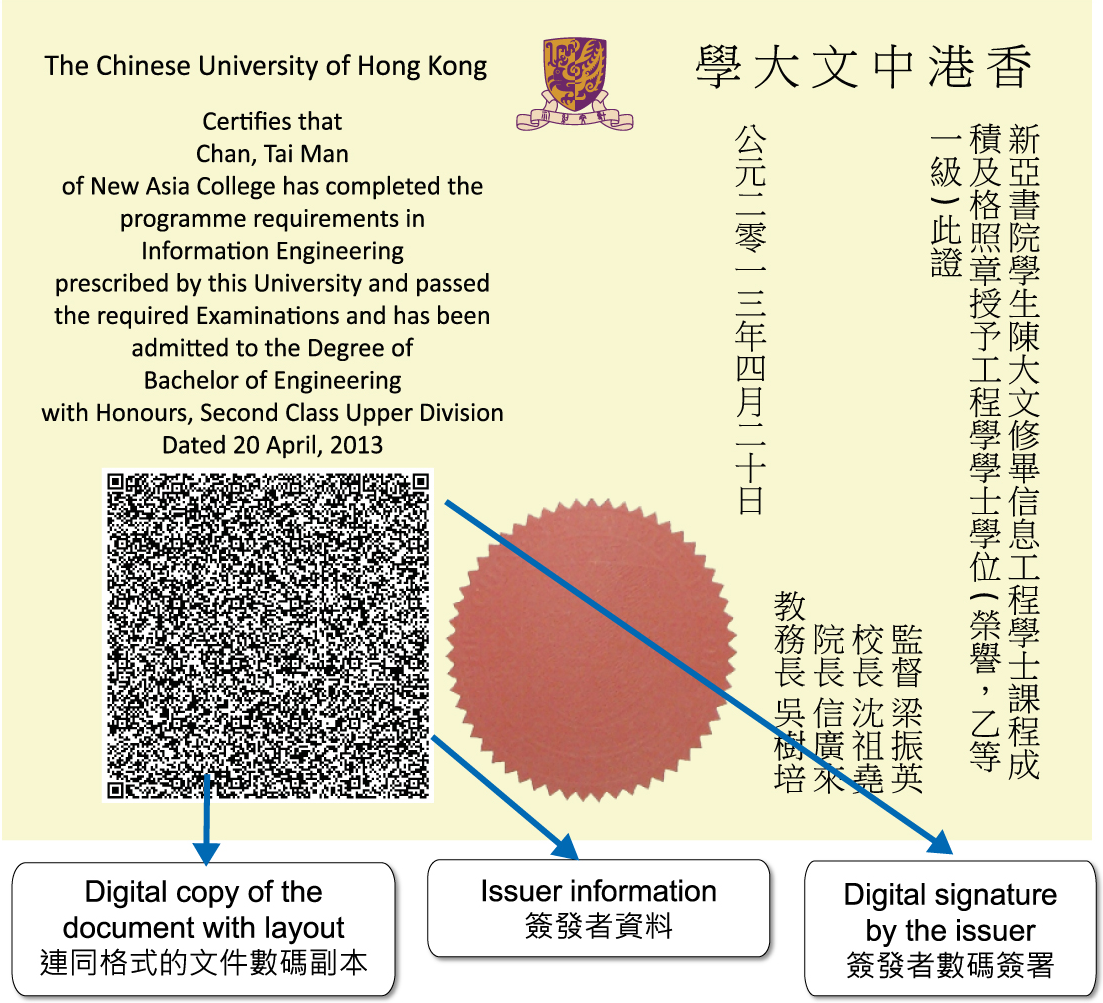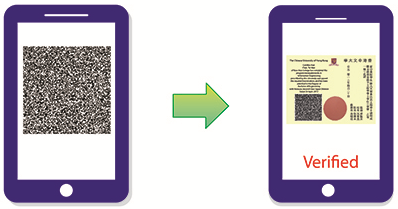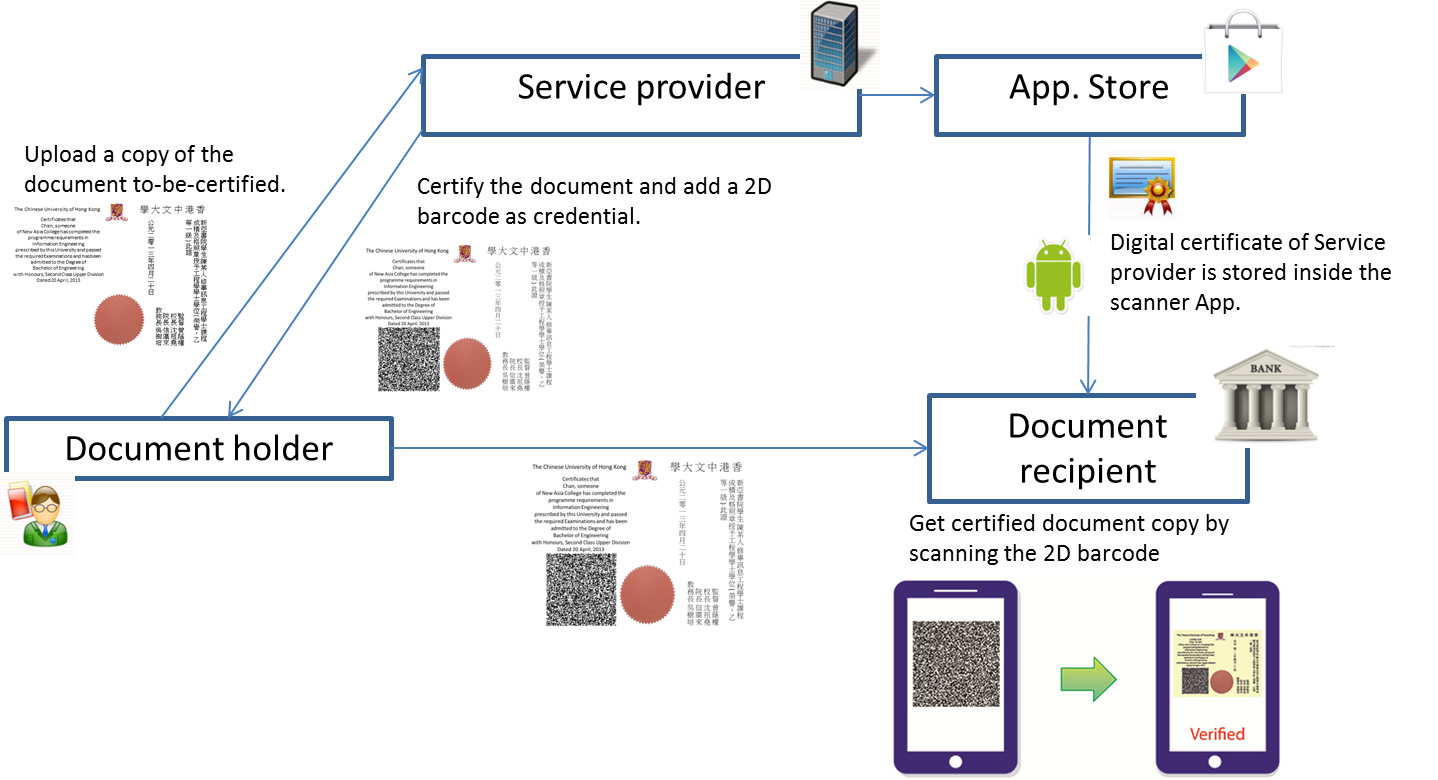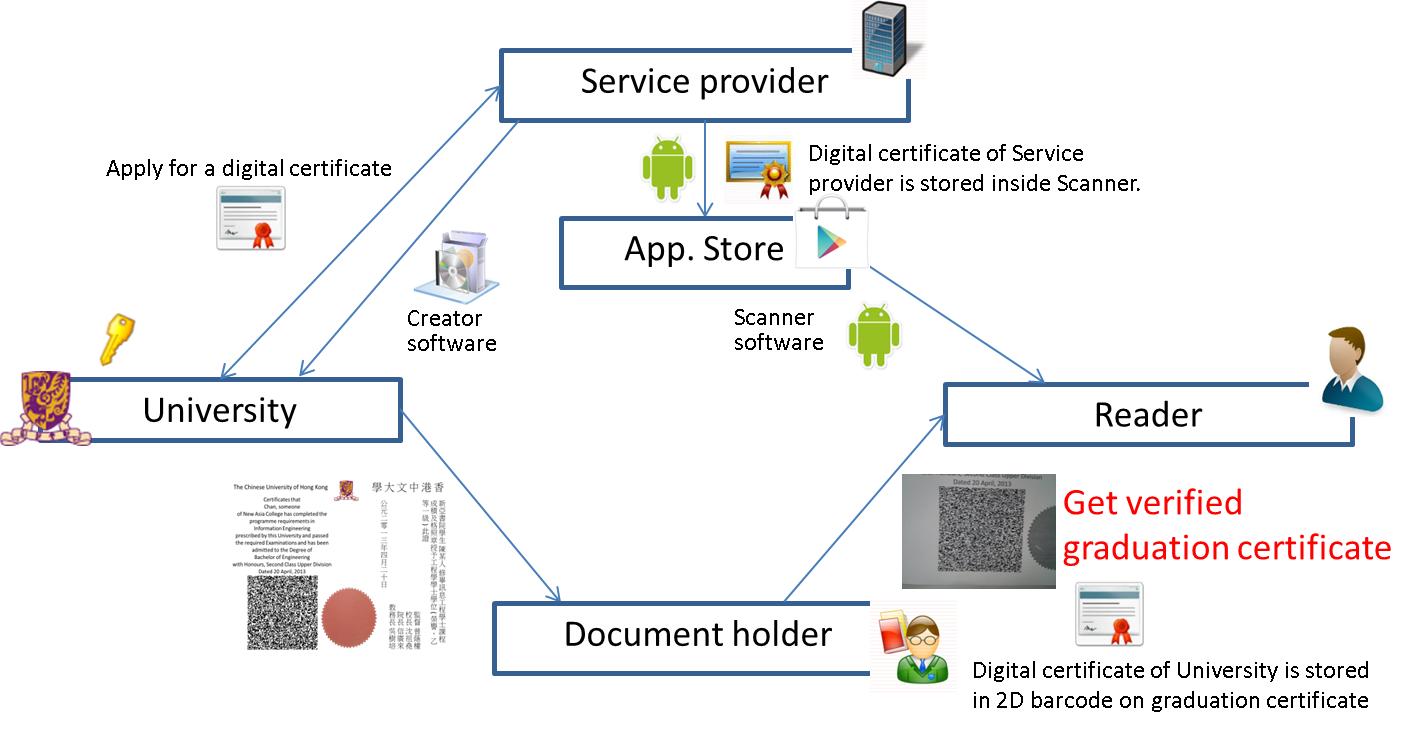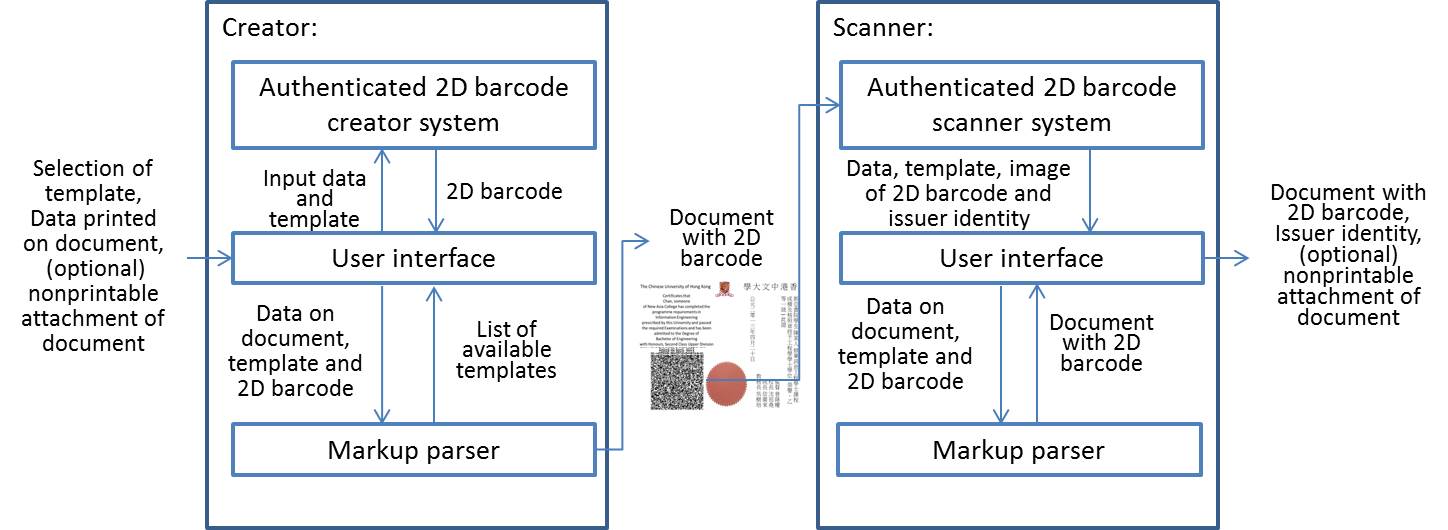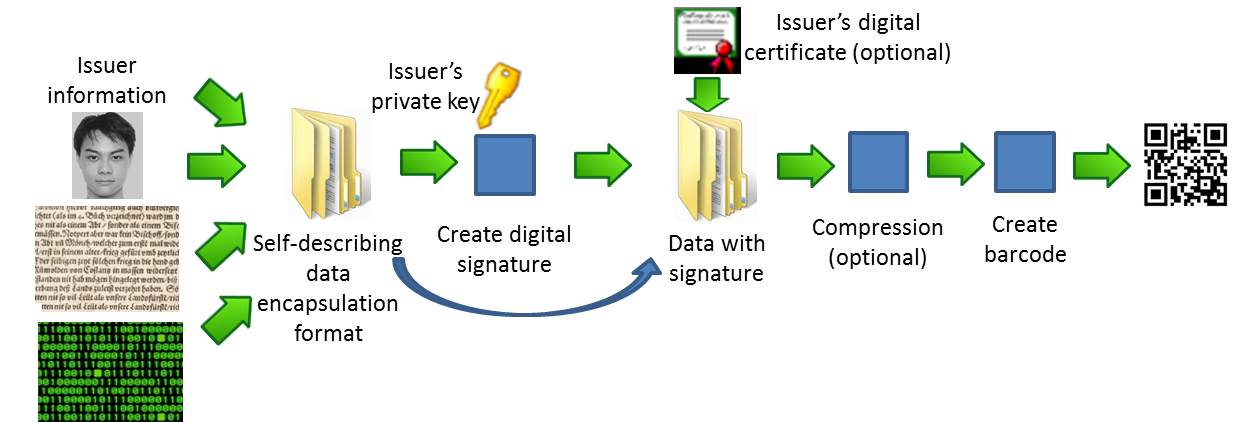|
Introduction
All printed documents/ credentials are potentially subject to counterfeiting and forgery.
Conventional counterfeiting solutions such as watermarking or printing using special-quality paper are not cost-effective.
Other widespread low-cost solutions such as certifications via authorized chops/ stamps only provide a false sense of security/ authenticity.
In this work, we propose Authenticated Papers: a cost-effective, secure solution for authenticating paper-based documents/ credentials using off-the-shelf handheld devices such as smartphones and tablets.
The key idea is to extend existing 2D barcodes, e.g. the QR-code, to carry a large amount of self-describing, and most importantly, authenticated data of all types containing text, image as well as other binary ones. By embedding the authenticated 2D barcode as an integral part of a paper-based document, the authenticity of the document can be readily verified by comparing its content with the corresponding digitally-signed content contained in the authenticated 2D barcode. Key features No online network-access or real-time communication with the document issuer is required during the document verification process. The to-be-protected document does not need to be hosted online for verification. Unlike hardware-based protection schemes using RFID or smartcard-based authentication, credentials protected by Authenticated Papers can be readily copied/ replicated by the users without losing its authenticity or verifiability. Document creations/ verifications can be done using off-the-shelf handheld devices like smartphones. The technology also serves as a bridge between paper-based and electronic-based media to store and/ or deliver verifiable binary data of all types. Unlike similar solutions such as SQRC, there is no common secret between the verifier and the document issuers. Selected portion of the data in the authenticated 2D barcode can be further encrypted to provide confidentiality against unauthorized readers or verifiers. Business models of Authenticated Papers technology
One possible business model of the Authenticated Papers technology is working as a service provider to:
Service model 1:
It is not necessary for the service provider to provide all services listed above.
In some applications, the service provider only needs to provide online document creation/ notarization services, together with the scanner app. to make the system work.
Service model 2:
If the document issuer (signer) needs to generate a large volume of documents such as Graduation Certificates, the service provider can provide the document creation software and take the role of a CA to issue a digital certificate for the document issuer.
System Architecture of Authenticated Papers
Figure 5 shows the architecture of the Authenticated Paper system. The key components are the authenticated 2D barcode creation and scanner systems.
Notice that the Authenticated Papers technology requires the embedding of a relatively large amount of information (40~50 times that of a typical QR code currently in use) within a 2D barcode of a small footprint. To make this technology feasible, we have designed and implemented new scanning and decoding algorithms to enable off-the-shelf smartphones/ tablets to process authenticated 2D barcodes carrying a large volume of densely-packed data. We have filed a regular U.S. patent application, titled "Method and Apparatus for Generating and/or Processing 2D Barcode", USPTO application number US 13/790,536 in March, 2013. Award of the Authenticated Papers technology
The "Authenticated Papers" project is the R&D category Winner of the 13th Asia Pacific ICT Alliance Award (APICTA).
This project has also won the Second Runner-up Award in the Professor Charles K. Kao Student Creativity Awards in May, 2013. This competition is a biennial university-wide competition organized by CUHK, covering not only ICT but all science and technology areas such as bio-tech, energy, material science and medicine. |

